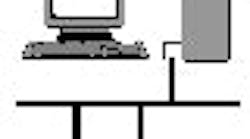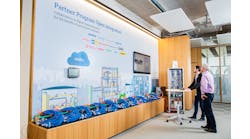Weve been through preventive, predictive, proactive and preemptive maintenance. We now introduce the ultimate maintenance strategy: Dont Break It. I would like to take credit for this addition to the crowded universe of maintenance schemes and paradigms, but Im afraid its not new.
Winston Ledet and Paul Monus brought The Manufacturing Game to BPs Midwestern refineries and chemical plants in the 90s. The point of the game was to get the worker bees to think on the enterprise level. In the game, my team won by investing our capital in operator training. We eliminated defects at their sourcethe people who were breaking things! To me, this was revolutionary, a big departure from the reigning paradigm, make everything bulletproof or operations will break it.
When I started with Standard Oil in the early 80s, one of my mentors in maintenance described his workplace, an 180,000 barrels-per-day refinery, like this: We have people walking around with brains and people walking around with hands; that is, people with knowledge didnt touch anything, and people who did turn valves or wrenches didnt think anything. Or, if they did, they still didnt do anything unless told to do so by a no-hands knowledge-brain.
The promised land envisioned in the 90s was one where the people turning wrenches and valves were empowered and somehow trained and informed to make decisions on their own. In promised-land factories, these new, self-directed people wouldnt even need supervisors any more. It was a full 180 degrees from the way we boiled oil as recently as 1985.
But were still a long way from that vision. Most proactive maintenance still relies on the no-hands, thinking-brain people. On large, spareless compressors and turbines, only the elite rotating equipment specialistsif anyonelooks at the real-time vibration and related data. Many vendors will examine data off-site and post conclusions and recommendations on a web page. What happened to the empowered, informed knowledge worker?
The measure-and-analyze paradigm of condition monitoring is like your yearly physical. Your doctor takes a snapshot of your condition, makes a judgment about your health and tells you to eat better and exercise more. But what if you wore an instrument that reported increased artery blockage and higher blood pressure when you ate a half-pound bacon cheeseburger? Maybe youd eat differently.
If devices alerted your operators in real time that they were running their equipment in a manner leading to an early demise, theyd probably make better choices running the plant. If theres advice that can be distilled from all that analysis, why not give it to the people who can take action in real time?
One device with potential for this vision is the Emerson CSI 9210. It does many of the same analyses one does for the periodic condition monitoring, only does them 24/7. It also uses Foundation fieldbus messaging to send alerts if it detects something amiss.
The system isnt flawless. For example, slight cavitation, a condition an operator could correct, is buried at the advisory level, which is usually filtered off operator consoles. We cant implement the dont-break-it maintenance strategy if the first message the operator gets is Its failed. Still, the potential is there.
Bentley Nevada, Emerson and their peers design for and market to rotating specialists. For the dont-break-itstrategy to succeed, instrumentation-and-control types need to come together with the machinery-and-operations people so these alerts and diagnostics dont just end up suppressed or disabled. Like process alarms, the alerts presented to the operator need to be actionable and unambiguous.
The 9210 is intended for second-tier rotating equipment, but what about the big spareless machines? These may already get a lot of attention, but what about the 100 or more hours (four days out of seven) that the rotating equipment geniuses are home sleeping, eating a cheeseburger or watching football? Doesnt 24/7 monitoring of these machines sense?
Fieldbus seems to offer a great opportunity to provide some good diagnostics that have relevance to operations. We have had some struggles with OPC, so a secure and simple network like H1 or HSE has great appeal. We look forward to solutions that not only provide the rotating equipment specialists with detailed diagnostics, but also offer meaningful and actionable alerts to the operator.
| About the Author |




